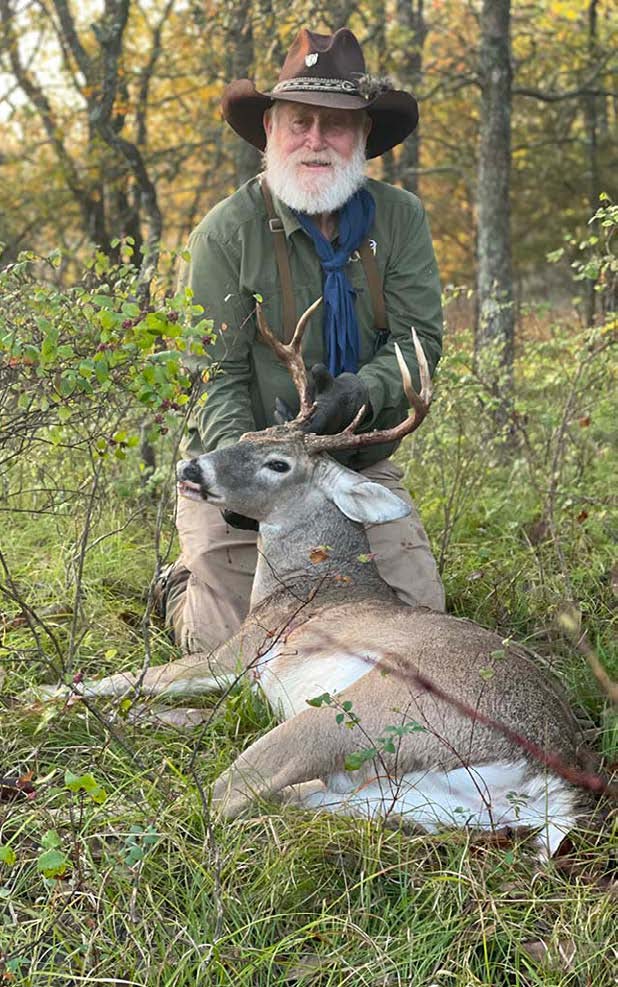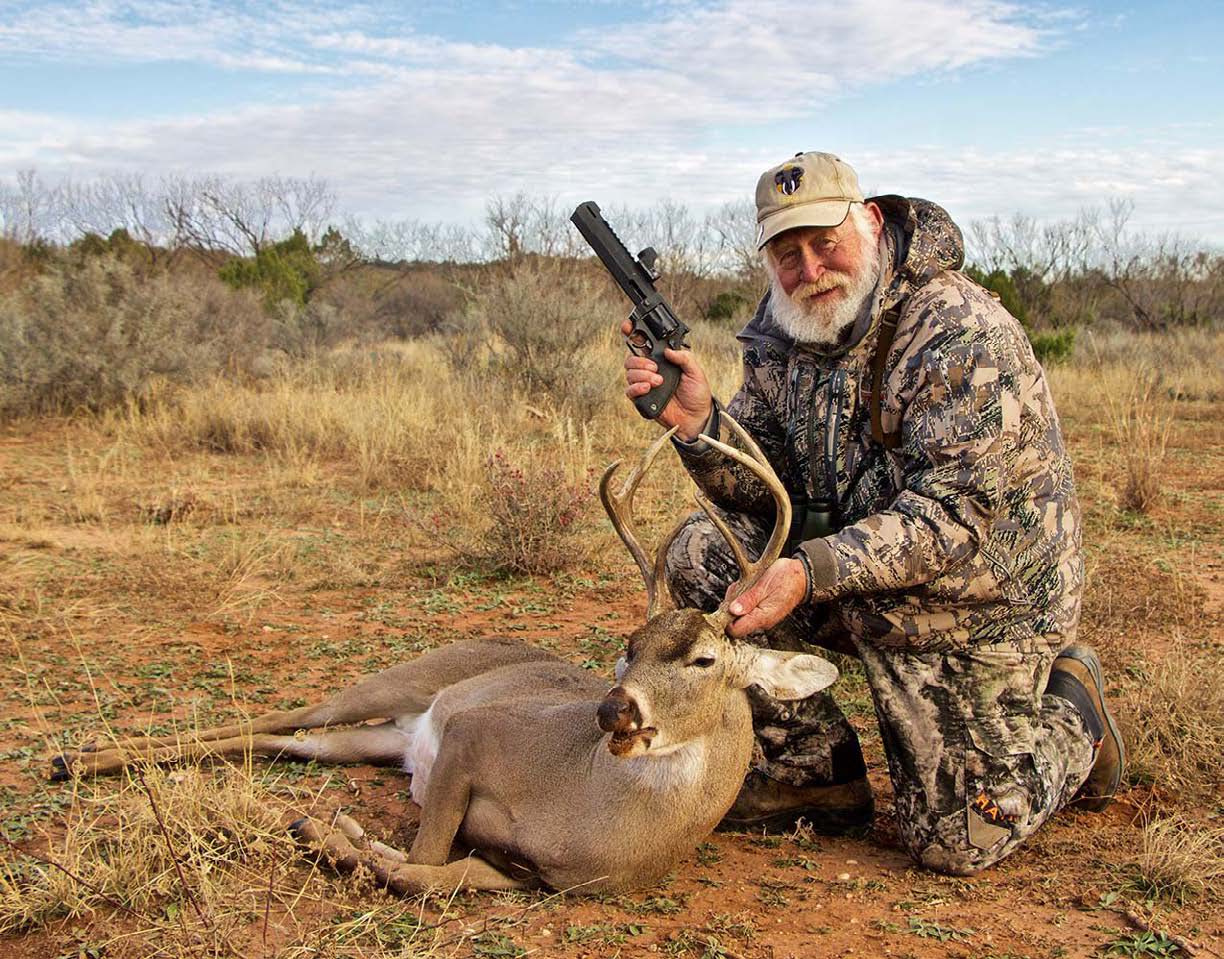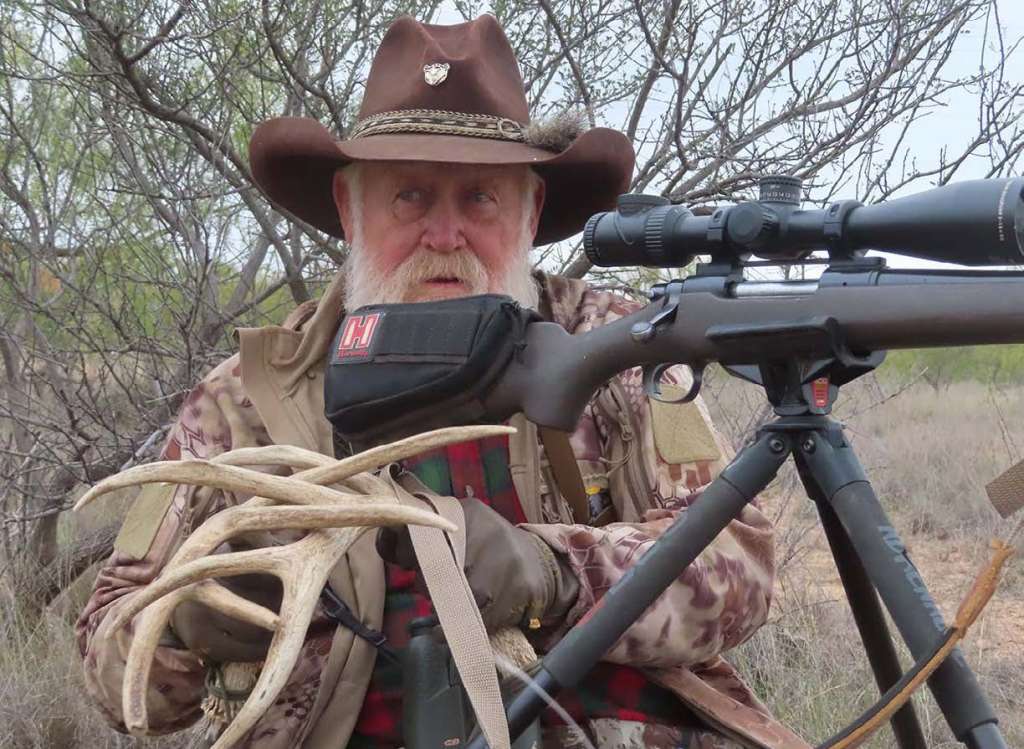The hunt had been fun, though long and grueling, and for the past several days I had crawled up a tree using a “climber” and hunted at the convergence of three active trails. One came and went from a large grain field, the other led to a dense cedar swamp and the third ran out to a rocky ridge. The property was relatively small, far smaller than most of the places I hunted back home in Texas.
The tree I crawled up using a borrowed “vintage” climber was certainly not my idea. My Wisconsin host proclaimed, nay demanded: “You can’t hunt from the ground. The deer here will smell you! And you’ll spook every one of them off of the property!”
Maybe so, maybe no! In three days of hunting that one spot (which is usually the limit I allow myself to hunt a particular stand successively), I had seen a grand total of one six-month-old buck fawn. He walked by looking high into the trees. He seldom looked at the ground in front of him. Could it be he was expecting danger from the heights?
With my free hand (the other was holding on for dear life), I clutched a Jennings Model T bow, one of the first compound bows to hit the market.
A few things to note here…most notably, I do not like sitting in trees when hunting deer…and I am not a great bow shot! And to me, hunting means matching wits with mature bucks on the same level where they live, which to me means on the ground. Also: for me, the world’s most fabulous and fascinating aroma is freshly burnt gunpowder shot at a mature Whitetail buck.
When asked if I am a bowhunter, my response is always the same: “I used to hunt with a bow…but then I grew up!”
Just Not for Me
Now, before there is huge outcry and outrage over my statement, let me state emphatically that I have nothing but admiration and respect for those who hunt with sticks and string, and I will fight to the death to support someone’s right to hunt that way. Bowhunting is simply something I no longer do, nor do I have a desire to hunt with bow and arrows in the future. I just love hunting with guns of all types: single-shot, bolt-action and lever-action rifles; revolvers and single-shot handguns; occasionally a shotgun and muzzleloaders.
I love learning about hunting when I am hunting! And, I did learn a lesson on that hunt. In areas where bowhunters hunt from trees, Whitetails often tend to walk around looking at treetops rather than looking at the ground. Before the above-described hunt was over, I decided to set up a ground blind. I had deer walk past me within feet of where I was secreted in a natural blind that was built from tree trunks and limbs. They paid me no mind nor even acknowledged my presence.
Sitting in my ground blind, though, I did manage to miss four does with my bow at distances from 20 to 30 steps. By the time the hunt was over, I was ready to head South.

Ongoing Learning
To me, one of the great things about hunting deer, particularly Whitetails, is that it is a continual learning process. A great place to start one’s learning process is watching the quality programming on the Pursuit Channel and on PursuitUP.com. Paying attention to what is on the screen can save you, and me, some heartache. I watch outdoor television shows for their entertainment value, but also to see how others hunt and the approaches they take to hunting particular bucks in different types of terrain and vegetation. Thankfully, a few shows actually show failures and not just successes. (I find the latter considerably more interesting and informational.) If they do show some “Ooops moments,” I like to see how the hunters react, what they learn from those mistakes, and what I can learn from those experiences to help keep me from making the same mistake.
“Over a lifetime of hunting Whitetails, including many years of having those hunts filmed for television shows, there are certainly some things I have learned. (Some of those things I have gladly learned, others not quite so much.)”
As a professional wildlife biologist/outdoor communicator, I have been extremely fortunate to have hunted nearly all the different types of terrain and habitats in North America where Whitetails exist. I have hunted small properties, backyards in cities, public land, private ranches and wilderness areas. I’ve traveled on hunts from the arid mountains and plains of Mexico north into the arboreal forest of Canada and from the foothills of the Rocky Mountains east to the Low Country of the Carolinas. With the excellent shows on Pursuit Channel and PursuitUP.com, anyone can view and learn from watching the excellent programming available. This makes it possible to see what it is like to hunt farmland and dense forests, wide-open prairies, brush country, well into the mountains, and in the marshes along our continent’s shorelines.
To me, a Whitetail deer is a Whitetail deer no matter where it lives. The animals simply adapt to terrain and vegetation, or sometimes, the lack of either or both.
Over a lifetime of hunting Whitetails, including many years of having those hunts filmed for television shows, there are certainly some things I have learned. (Some of those things I have gladly learned, others not quite so much.)
Bad Season
The latter pretty much describes my most recent deer hunting season. In several decades of hunting Whitetails, the 2022 season has been my “most interesting,” let’s say (heavy emphasis on the quotation marks.) Stated another way, my 2022 Whitetail deer season “sucked”! Not only does that describe not seeing mature bucks with impressive antlers, but in many instances, simply not seeing deer. A lesson sadly learned is that some years, taking a mature buck with nice antlers might be just about impossible! During the fall of 2022, I hunted alot—I mean weeks, not merely days. I hunted several places I have frequented in the past.
Difficult Conditions
Most of the areas I hunted had experienced drought conditions the previous winter or antler- growing season. Some experienced death losses of older and younger deer because of extremely cold weather for numerous days. That’s not typical winter weather where I live and where I mostly hunt. The deer that survived the cold and the following drought failed to develop big antlers. Body development and maintenance always take precedence over antler development. Many deer did well to simply survive, rather than thrive.

Thinking Fawns
Too often, fawn production is not taken into account by hunters. Several of the places I hunted this fall had relatively low fawn survival rates three to five years ago. That meant that this year, there were few 3-, 4- and 5-year-old bucks. And this past spring/summer (2022), quite a few places again had very low fawn recruitment. The lack of fawns will be felt for several years into the future. Five years from now, there will be very few 5-year old bucks. That’s purely a fact of life!
This past hunting season I did pass several mature bucks with lesser antlers. In another year with decent nutrition, they may return with nice antlers. These same bucks might have been considered by some to be “management bucks” that should be taken. But with sparse vegetation during the past antler-growing season, all things considered, those bucks did pretty well developing the antlers they did. With recent winter rains and milder temperatures, bucks that might have looked like “management bucks” this year (whatever that category means on a local basis) will likely produce impressive antlers this coming fall.
Some Favorites
Some of my favorite Whitetails to hunt are those older bucks with six-point racks, meaning browtines, second points and main beams. Some of you may recall an episode I did a few years ago for “Trailing the Hunter’s Moon,” a show I long owned and hosted before giving the show to Blake Barnett. After hunting one particular six-point on the Hargrove Ranch in the lower Texas Panhandle for several years, I was finally able to take this Whitetail. The keys to his undoing were patience and persistence, and a “never give up” attitude.
I could have taken other bucks but I was determined to take the “old six-point.” (That’s about as far as I will go in naming any H3 Whitetail Solutions buck.) Patience and persistence came into play in hunting the areas where he had been seen by ranch personnel. This buck avoided being photographed by trail cameras, as some bucks tend to do.
The same can pretty much be said about two ancient six-point bucks I took this past fall. One was on property we manage through H3 Whitetail Solutions under a quality-management program. I found the East Texas buck on the third morning I hunted, in an area where he had been seen by the ranch owner. This buck, too, avoided capture of his image on a trail camera.
Brandon Houston filmed that hunt for our “The Journey,” a new show in the making. One shot from my.270 Win Mossberg Patriot topped with a Trijicon Huron scope and shooting Hornady’s Precision Hunter 145-grain ELD-X, is all it took to drop him.
The same happened several weeks later when I dropped another ancient six-point with my Taurus Raging Hunter in .454 Casull, topped with a Trijicon SRO red-dot sight, and shooting Hornady’s 240-grain XTP Mag combination. That was on property we are helping Double A Outfitting manage in the Texas Trans Pecos region.
Patience Pays
In all three instances, patience on my part was a common thread to the respective bucks’ undoing.
Live, watch, do, and learn are all integral parts of the Pursuit Channel and PursuitUp.com’s programming. As in real life, if you want to become a better, more patient, and more proficient deer hunter, pay attention to the lessons you can learn from others.
Per our affiliate disclosure, we may earn revenue from the products available on this page. To learn more about how we test gear, click here.



